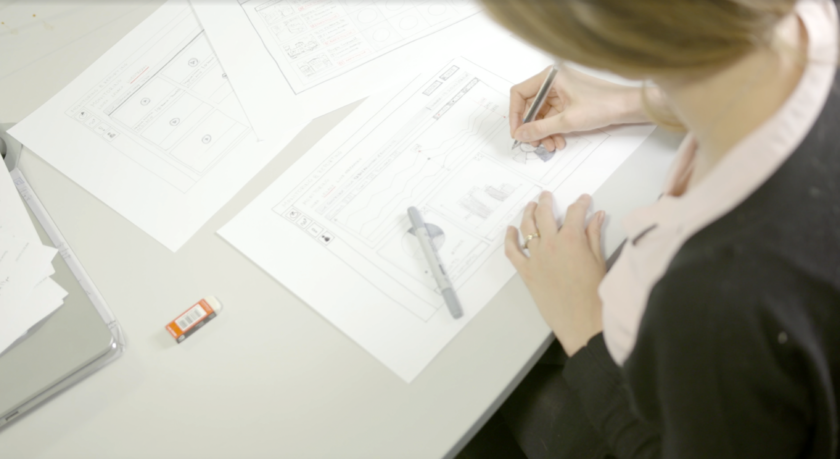HITS

UI Centric: Creating High-Quality User Experiences
Story Highlights
Every day, millions of people use digital products on an ever-growing range of platforms. To create digital products that are intuitive and useful across this complex landscape, it requires a well-structured approach. Essentially, it comes down to the organization of information, content presentation, and orchestrating the means by which a user can interact with the content.
Max Heiderscheid, VP of project operations for New York-based UI Centric, spoke with the Media & Entertainment Service Alliance (MESA) about UI Centric’s focus on ultra-high-quality user experiences and delivering memorable products.
MESA: What was the impetus for UI Centric and how did the company come about?
Heiderscheid: UI Centric was founded in 2008 in London. At that time, a lot of technology firms outsourced their talent to save on cost, but we believe that in order to produce top quality work it is essential to have in-house development, UX and design talent working alongside. Our business has grown and transformed over the last ten years along with the ever-changing tech sector, but we have always upheld our philosophy of developing around the user experience.
Today we have offices in London, New York and San Antonio and work with some of the largest media and entertainment companies in North America like NBC, CBS, AMC and Showtime. In order to achieve the absolute highest level of user experiences for such high-profile brands, you have to be pretty obsessive about quality even at the smallest scale. Most people would be amazed at the level of technical expertise, engineering, and creativity that goes into our everyday work.
MESA: What gaps in the user experience space has the company sought to fill?
Heiderscheid: We build solutions for a broad range of platforms, including connected TV devices, game consoles, set top boxes, automotive, VR headsets, wearables, web and mobile. We pretty much work on any platform where humans interact with technology. This naturally presents a variety of challenges to our experience architecture and design teams, such as dealing with device form factors, screen resolutions, device capabilities, and most fundamentally, the varying ways in which people will navigate and interact with content.
Because of this, we take a higher-level approach that incorporates proper human factors into the design regardless of the form-factor.
MESA: And it’s not just user experience designs … what are some of the challenges UI Centric’s engineering team helps clients tackle?
 Heiderscheid: Our large in-house engineering team is capable of delivering end-to-end solutions on a variety of native technologies and frameworks. We have extensive experience with third-party integrations and build custom SDKs, where necessary. Video streaming is one of the most common engineering challenges we help tackle for our clients.
Heiderscheid: Our large in-house engineering team is capable of delivering end-to-end solutions on a variety of native technologies and frameworks. We have extensive experience with third-party integrations and build custom SDKs, where necessary. Video streaming is one of the most common engineering challenges we help tackle for our clients.
Our team has deep video engineering expertise and works at all levels in the video pipeline. We have extremely wide knowledge with common consumer broadcast integrations and have worked with most video player, advertising framework, streaming format, DRM technology, analytics library out there.
A challenge that we often deal with on mobile or connected TV devices is achieving a smooth performance. It’s key to an enjoyable user experience. The bigger picture is that we consider application performance throughout the whole development lifecycle. Even before development starts, we proactively analyze the required features in conjunction with their external dependencies, such as API endpoints or third-party services, to recognize possible performance bottlenecks and consider a wide range of solutions.
During the development process, our experts use various methods like performance counters, custom logging reports, simulated bandwidth throttling, debugging and device profiling to measure load and computing times, and optimize the experience on all supported devices.
MESA: CBS All Access, BBC, NBC, … UI Centric counts some big names among its creative clients. What are some things that you are proud of and what’s UI Centric’s favorite use-case examples, where companies made especially good use of your services?
Heiderscheid: I’m proud for the common thread of exceptional quality in our work not only across our large media and entertainment clients, but across all of our projects. We build experiences that add value to the user, and seeing our products used by millions of people makes me proud and grateful to be a part of this work. It’s definitely an exciting time to be part of UI Centric.
Over the years we delivered countless successful projects, but if I had to single out one company that made especially good use of our expertise and services, it would be Time Out.
 Time Out started collaborating with UI Centric, when they recognized that their digital offering needed to transform to meet (and ideally exceed) the expectations of their very engaged and passionate readership. Together with a multidisciplinary team from UI Centric integrated into Time Out’s own team, we developed a complex yet intuitive strategy- with discoverability at the heart of the experience.
Time Out started collaborating with UI Centric, when they recognized that their digital offering needed to transform to meet (and ideally exceed) the expectations of their very engaged and passionate readership. Together with a multidisciplinary team from UI Centric integrated into Time Out’s own team, we developed a complex yet intuitive strategy- with discoverability at the heart of the experience.
Not only did we then create the user experience; designed and developed a responsive website along with native applications for all major mobile and connected TV devices, but we also user-tested our concepts and wireframes throughout the process in our in-house test laboratory in an effort to validate our approach with empirical evidence. As a result, we helped transform a heritage print brand into a digital media content and services company.
MESA: What’s next from UI Centric, what can we look forward next from the company?
Heiderscheid: Technology is moving fast and UI Centric will always strive to continually develop stronger and more innovative concepts and break into new platforms. Lately, there is a big push towards voice-enabled smart speakers. At first glance, it seems like a different way of thinking about user experience, but it comes down to the same objective — making sure users can interact naturally and intuitively with the platform.
We’ve already launched a number of applications and skills, and have been an Amazon Alexa partner for the last two years. Currently, we are working on a very exciting project that will launch in a few weeks. Users will be able to use their Alexa or Google Home devices to interact with their vehicle. So, imagine using these voice-activated platforms to preheat or start your car, or find out how much gas you have left. I believe there is an enormous potential in these platforms and I can’t wait to see what we’ll be able to do with them in just a year from now.









